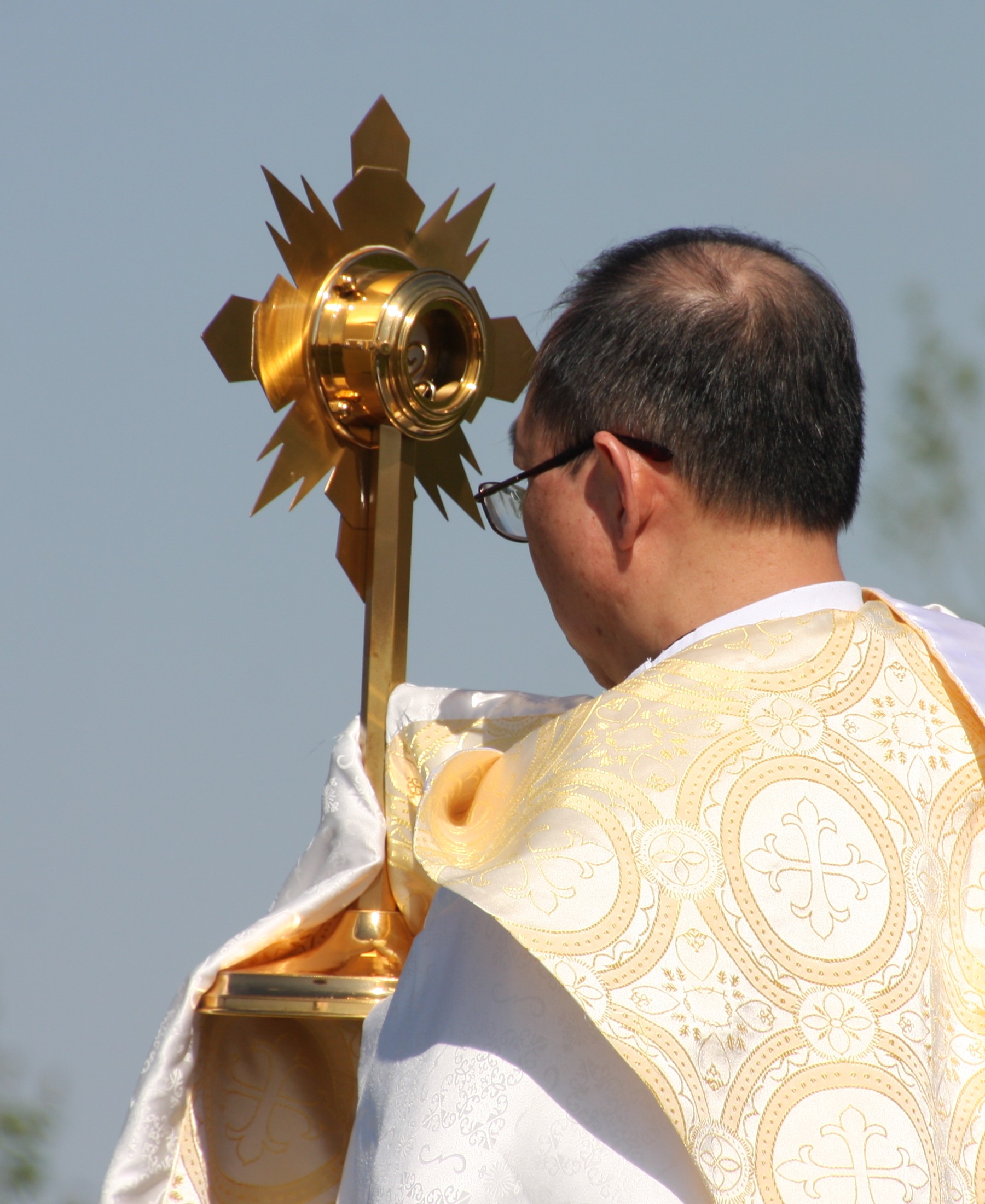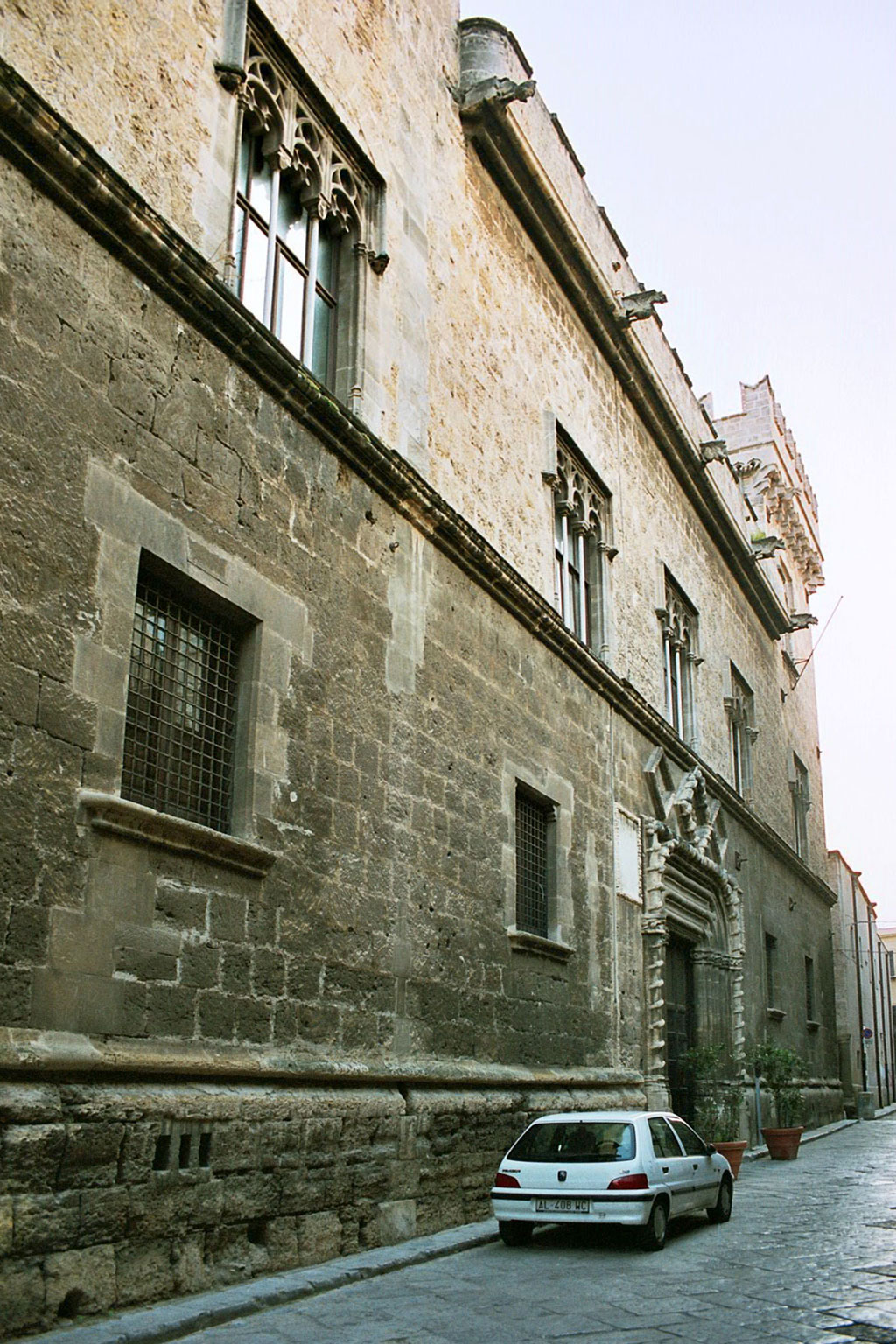|
Paolo Amato (architect)
Paolo Amato (24 January 1634 - 3 July 1714) was an Italian Baroque and Rococo architect. He is also notable as author of the treatise ''La Nuova Pratica di Prospettiva'' (''The New Method of Perspective''), published in Palermo in 1732. Life Born in Ciminna, where the town hall and a circle in the local piazza are both now named after him, he studied under Angelo Italia and taught Giacomo Amato. His long and fertile career included time as official architect to the Senate of Palermo on Sicily, an office in which he designed stage sets and floats for the festivities for Saint Rosalia's day. He died in Palermo and both he and his brother Vincenzo are buried in Santa Ninfa dei Crociferi church. Works His most important work design was the church of Santissimo Salvatore in Palermo, begun in 1682 on an elongated dodecagonal plan with an elliptical dome. In 1681 he designed a marble theatre for music festivals at the present Foro Italico, mainly demolished in the 19th century to ... [...More Info...] [...Related Items...] OR: [Wikipedia] [Google] [Baidu] |
Paolo Amato
Paolo is both a given name and a surname, the Italian form of the name Paul. Notable people with the name include: People with the given name Paolo Art *Paolo Alboni (1671–1734), Italian painter *Paolo Abbate (1884–1973), Italian-American sculptor *Paolo Antonio Barbieri (1603–1649), Italian painter *Paolo Buggiani (born 1933), Italian contemporary artist *Paolo Carosone (born 1941), Italian painter and sculptor *Paolo Moranda Cavazzola (1486–1522), Italian painter *Paolo Farinati (c. 1524–c. 1606), Italian painter *Paolo Fiammingo (c. 1540–1596), Flemish painter *Paolo Domenico Finoglia (c. 1590–1645), Italian painter *Paolo Grilli (1857–1952), Italian sculptor and painter *Paolo de Matteis (1662–1728), Italian painter *Paolo Monaldi, Italian painter *Paolo Pagani (1655–1716), Italian painter *Paolo Persico (c. 1729–1796), Italian sculptor *Paolo Pino (1534–1565), Italian painter *Paolo Gerolamo Piola (1666–1724), Italian painter *Paolo Porpora (1617– ... [...More Info...] [...Related Items...] OR: [Wikipedia] [Google] [Baidu] |
17th-century Italian Architects
The 17th century lasted from January 1, 1601 ( MDCI), to December 31, 1700 ( MDCC). It falls into the early modern period of Europe and in that continent (whose impact on the world was increasing) was characterized by the Baroque cultural movement, the latter part of the Spanish Golden Age, the Dutch Golden Age, the French ''Grand Siècle'' dominated by Louis XIV, the Scientific Revolution, the world's first public company and megacorporation known as the Dutch East India Company, and according to some historians, the General Crisis. From the mid-17th century, European politics were increasingly dominated by the Kingdom of France of Louis XIV, where royal power was solidified domestically in the civil war of the Fronde. The semi-feudal territorial French nobility was weakened and subjugated to the power of an absolute monarchy through the reinvention of the Palace of Versailles from a hunting lodge to a gilded prison, in which a greatly expanded royal court could be more easily k ... [...More Info...] [...Related Items...] OR: [Wikipedia] [Google] [Baidu] |
Italian Baroque Architects
Italian(s) may refer to: * Anything of, from, or related to the people of Italy over the centuries ** Italians, an ethnic group or simply a citizen of the Italian Republic or Italian Kingdom ** Italian language, a Romance language *** Regional Italian, regional variants of the Italian language ** Languages of Italy, languages and dialects spoken in Italy ** Italian culture, cultural features of Italy ** Italian cuisine, traditional foods ** Folklore of Italy, the folklore and urban legends of Italy ** Mythology of Italy, traditional religion and beliefs Other uses * Italian dressing, a vinaigrette-type salad dressing or marinade * Italian or Italian-A, alternative names for the Ping-Pong virus, an extinct computer virus See also * * * Italia (other) * Italic (other) * Italo (other) * The Italian (other) * Italian people (other) Italian people may refer to: * in terms of ethnicity: all ethnic Italians, in and outside of Italy * in ... [...More Info...] [...Related Items...] OR: [Wikipedia] [Google] [Baidu] |
Anne Marie D'Orléans
Anne Marie d'Orléans (27 August 1669 – 26 August 1728) was Queen of Sardinia by marriage to Victor Amadeus II of Savoy. She served as regent of Savoy during the absence of her spouse in 1686 and during the War of the Spanish Succession. She is also an important figure in British history (see Jacobite Succession below). Youth She was the daughter of Philippe I, Duke of Orléans, younger brother of Louis XIV, and Henrietta of England, the youngest daughter of Charles I of England. Her mother died at the Château de Saint-Cloud ten months after Anne Marie's birth. A year later, her father married 19-year-old Elizabeth Charlotte of the Palatinate, who became very close to her step-daughters. Her half-brother Philippe II, Duke of Orléans, the future Regent of France, was born of her father's second marriage. Her stepmother later described her as ''one of the most amiable and virtuous of women''. Marriage To maintain French influence in the Italian states, her uncle King ... [...More Info...] [...Related Items...] OR: [Wikipedia] [Google] [Baidu] |
Victor Amadeus II Of Sardinia
Victor Amadeus II (Vittorio Amedeo Francesco; 14 May 166631 October 1732) was Duke of Savoy from 1675 to 1730. He also held the titles of Prince of Piedmont, Duke of Montferrat, Marquis of Saluzzo and Count of Aosta, Moriana and Nice. Louis XIV organised his marriage in order to maintain French influence in the Duchy, but Victor Amadeus soon broke away from the influence of France. At his father's death in 1675, his mother, Marie Jeanne Baptiste of Nemours, was regent in the name of her nine-year-old son and would remain in de facto power until 1684 when Victor Amadeus banished her further involvement in the state. Having fought in the War of the Spanish Succession, he became King of Sicily in 1713, but he was forced to exchange this title and instead became King of Sardinia. Victor Amadeus left a considerable cultural influence in Turin, remodeling the Royal Palace of Turin, Palace of Venaria, Palazzina di caccia of Stupinigi, as well as building the Basilica of Superga where ... [...More Info...] [...Related Items...] OR: [Wikipedia] [Google] [Baidu] |
Andrea Palma
Andrea Palma (b. Trapani, 1644 or 1664 – d. 1730) was an 18th-century Italian architect, working in the Baroque style. He is credited with being one of the most notable architects of the Sicilian Baroque movement. His works include the Cathedral of Syracuse The Cathedral of Syracuse (''Duomo di Siracusa''), formally the ''Cattedrale metropolitana della Natività di Maria Santissima'', is an ancient Catholic church in Syracuse, Sicily, the seat of the Catholic Archdiocese of Siracusa. Its structure ..., which was recognized by UNESCO as a World Heritage Site. Other works by Palma include "Chiesa di Santa Maria di Montevergini", and the Chiesa di San Gioacchino, whose baroque facade he designed in the early 18th century. References Architects from Palermo Architects of the Sicilian Baroque 18th-century Italian people 17th-century births 1730 deaths {{Italy-architect-stub ... [...More Info...] [...Related Items...] OR: [Wikipedia] [Google] [Baidu] |
Forty Hours' Devotion
Forty Hours' Devotion, in Italian called ''Quarant'ore'' or written in one word ''Quarantore'', is a Roman Catholic exercise of devotion in which continuous prayer is made for forty hours before the Blessed Sacrament in solemn exposition. It often occurs in a succession of churches, with one finishing prayers at the same time as the next takes it up. A celebration of such a devotion is begun by a Solemn Mass or "Mass of Exposition", and ended by a "Mass of Reposition". The latter concludes with a procession and benediction. The Blessed Sacrament is reposed in the tabernacle for the daily Mass, and then returned for exposition after Mass. It is assumed that the exposition and prayer should be kept up by night as well as by day, but permission is given to dispense with this requirement when enough watchers cannot be obtained. In such a case the interruption of the devotion by night does not forfeit the indulgences conceded by the Holy See to those who take part in it. History of t ... [...More Info...] [...Related Items...] OR: [Wikipedia] [Google] [Baidu] |
Monstrance
A monstrance, also known as an ostensorium (or an ostensory), is a vessel used in Roman Catholic, Old Catholic, High Church Lutheran and Anglican churches for the display on an altar of some object of piety, such as the consecrated Eucharistic Sacramental bread, host during Eucharistic adoration or Benediction of the Blessed Sacrament. It is also used as reliquary for the public display of relics of some saints."" New Advent Catholic Encyclopedia. Retrieved on 2014-11-16. The word ''monstrance'' comes from the Latin language, Latin word ''monstrare'', while the word ''ostensorium'' came from the Latin word ''ostendere''. Both terms, meaning "to show", are used for vessels intended for the exposition of the Blessed Sacrament, but ''ostensorium'' has only this meaning. Liturgical context In the Catholic Churc ...[...More Info...] [...Related Items...] OR: [Wikipedia] [Google] [Baidu] |
Antonino Grano
Antonino Grano (1660–1718) was an Italian painter and engraver, principally active in Sicily. Putatively, he was from Palermo. by Gregorio Raymondo Granata; 1863; page 52. Sources External links 1660 births 1718 deaths Baroque painters 17th-century Italian painters Italian male painters 18th-century Italian painters Art ...[...More Info...] [...Related Items...] OR: [Wikipedia] [Google] [Baidu] |
Palazzo Abatellis
Palazzo Abatellis (also known as Palazzo Patella) is a palazzo in Palermo, Sicily, southern Italy, located in the Kalsa quarter. It is home to the Galleria Regionale della Sicilia, the Gallery of Art for the Sicilian region. History The palazzo, an example of Gothic-Catalan architecture, was designed in the 15th century by Matteo Carnelivari, at the time working in Palermo at the palazzo Aiutamicristo. It was the residence of Francesco Abatellis (or Patella), port master of the Kingdom of Sicily. After the death of Abatellis, it remained to his wife, and, after her death, it was given to a female monastery. Several modifications were carried on to adapt it to monastic life. They included a chapel, built on the left side of the chapel (1535–1541), hiding one of the façades. In the 18th century, following the construction of a bigger church (the current ''Santa Maria della Pietà''), the chapel was abolished and divided into several rooms. The front part was used as parl ... [...More Info...] [...Related Items...] OR: [Wikipedia] [Google] [Baidu] |




